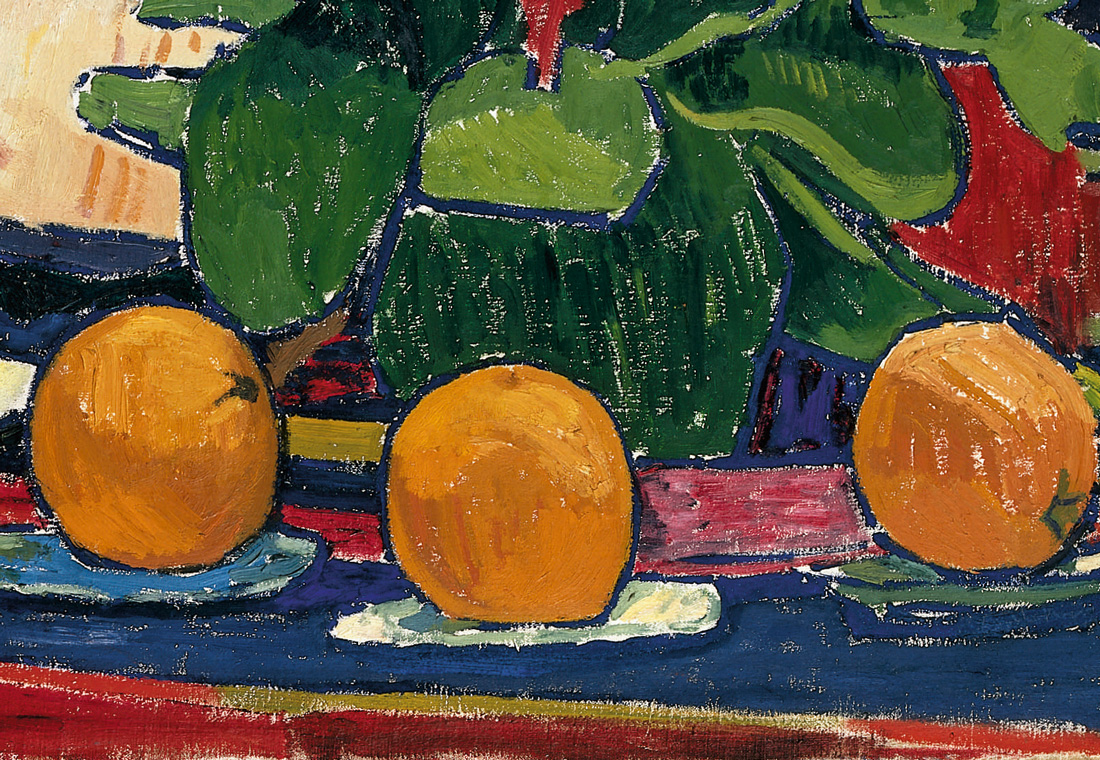
Cuno Amiet, Stillleben mit drei Orangen, 1907/1908, oil on canvas, 54 x 60 cm, detail. The ultramarine containing blue paint shows an early stage of discolouration.
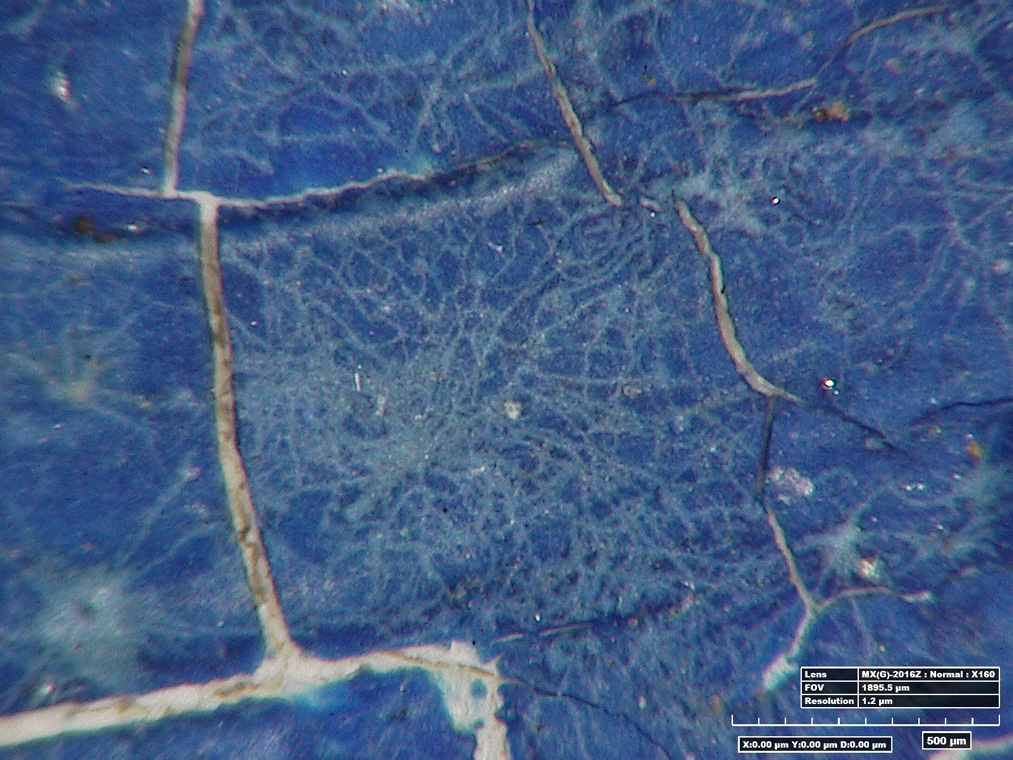
Cuno Amiet, Stillleben mit drei Orangen, 1907/1908, oil on canvas, 54 x 60 cm, detail of the discoloration in ultramarine paint. Photograph taken with a high resolution Hirox digital microscope.
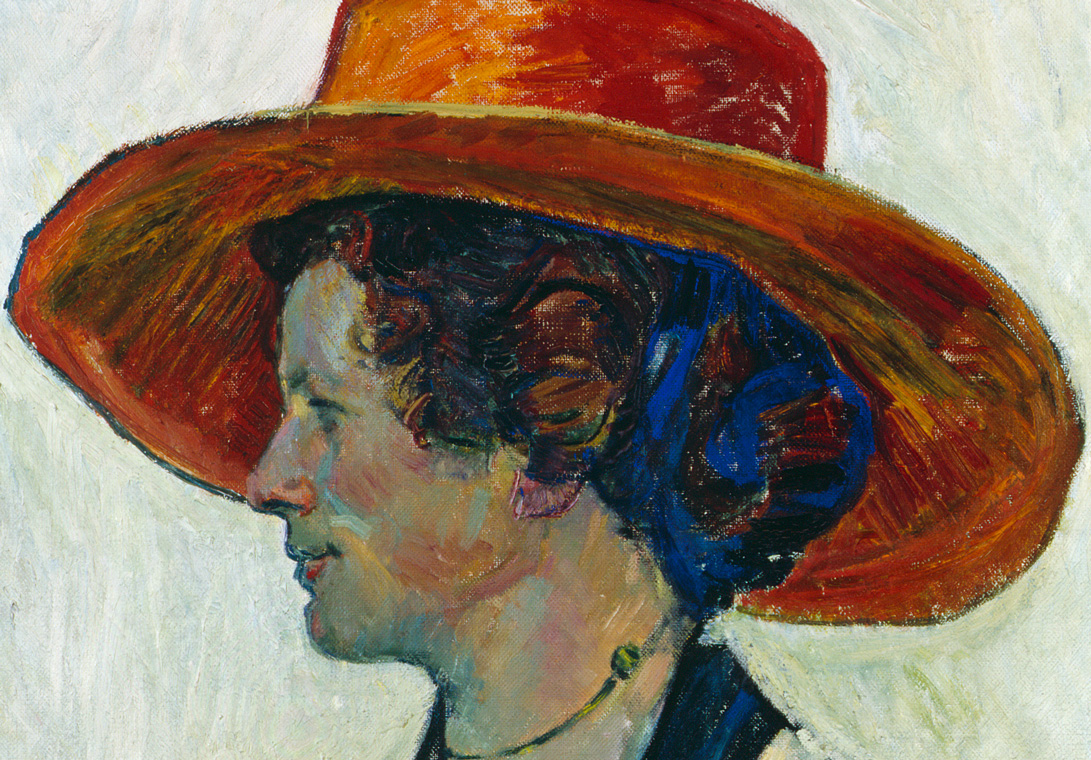
Cuno Amiet, Porträt (Annel), 1910, oil on canvas, 60 x 55 cm, Detail. The paint of the hat, which contains cadmium yellow, is covered in white efflorescing crystals.
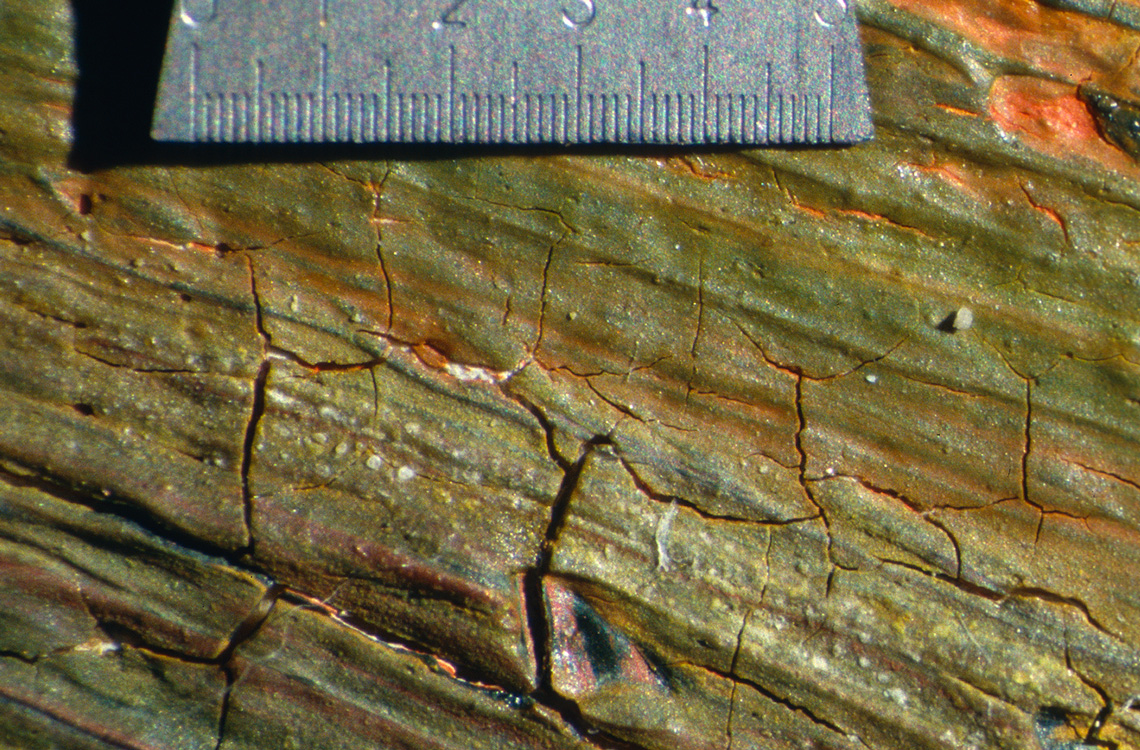
Cuno Amiet, Porträt (Annel), 1910, oil on canvas, 60 x 55 cm, Detail. The paint of the hat, which contains cadmium yellow, is covered in white efflorescing crystals.
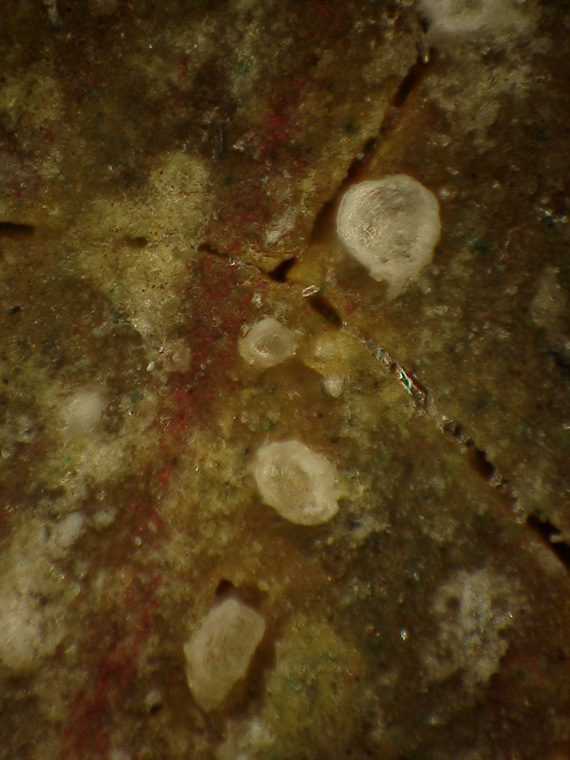
Cuno Amiet, Porträt (Annel), 1910, oil on canvas, 60 x 55 cm, Detail of efflorescing crystalline material. Photograph taken with a high resolution Hirox digital microscope.
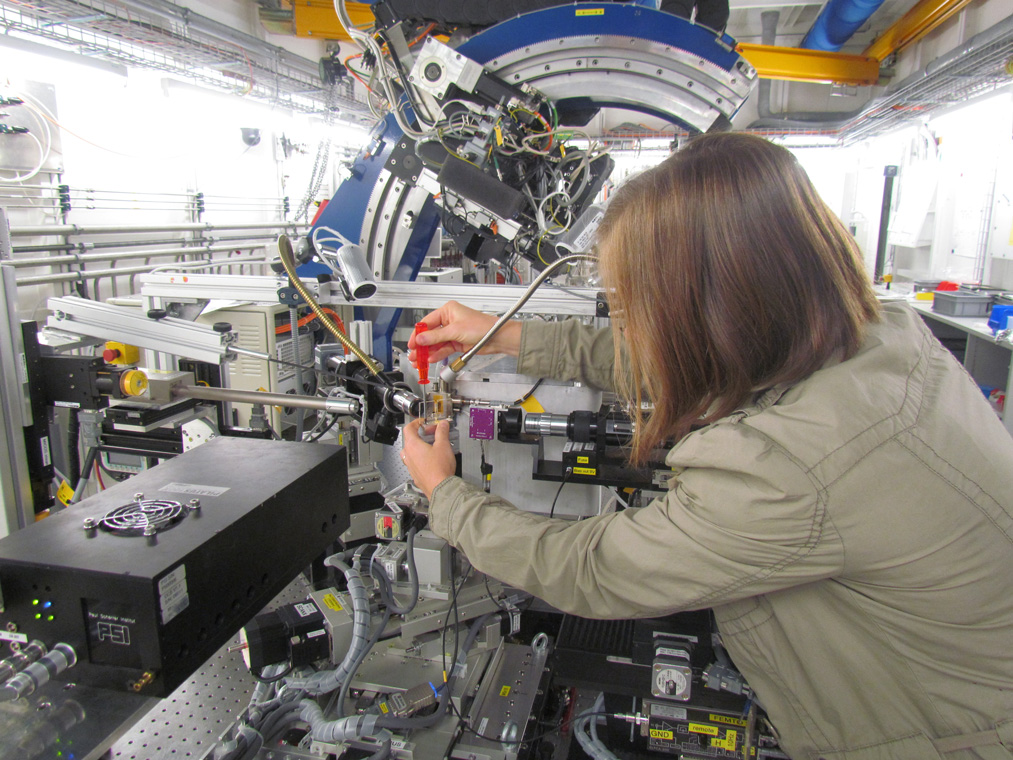
Dr. Camelia Borca setting up a reference sample at the MicroXAS Beamline (Paul Scherrer Institute)
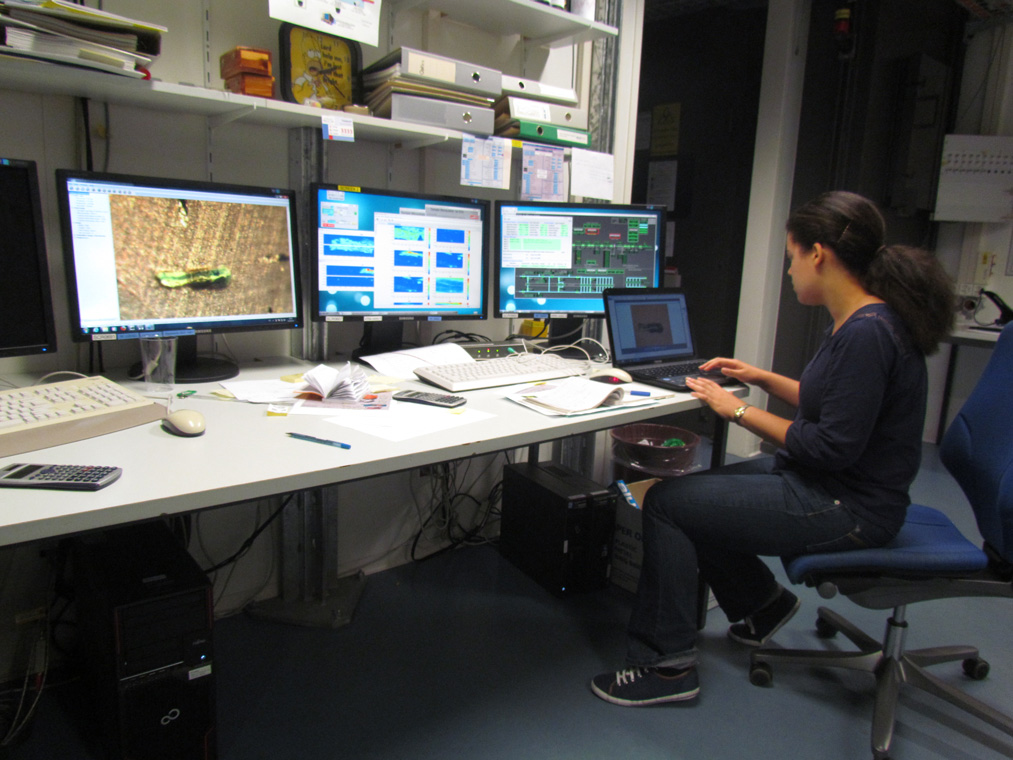
Eleanor Cato at the MicroXAS beamline control room (Paul Scherrer Institute)